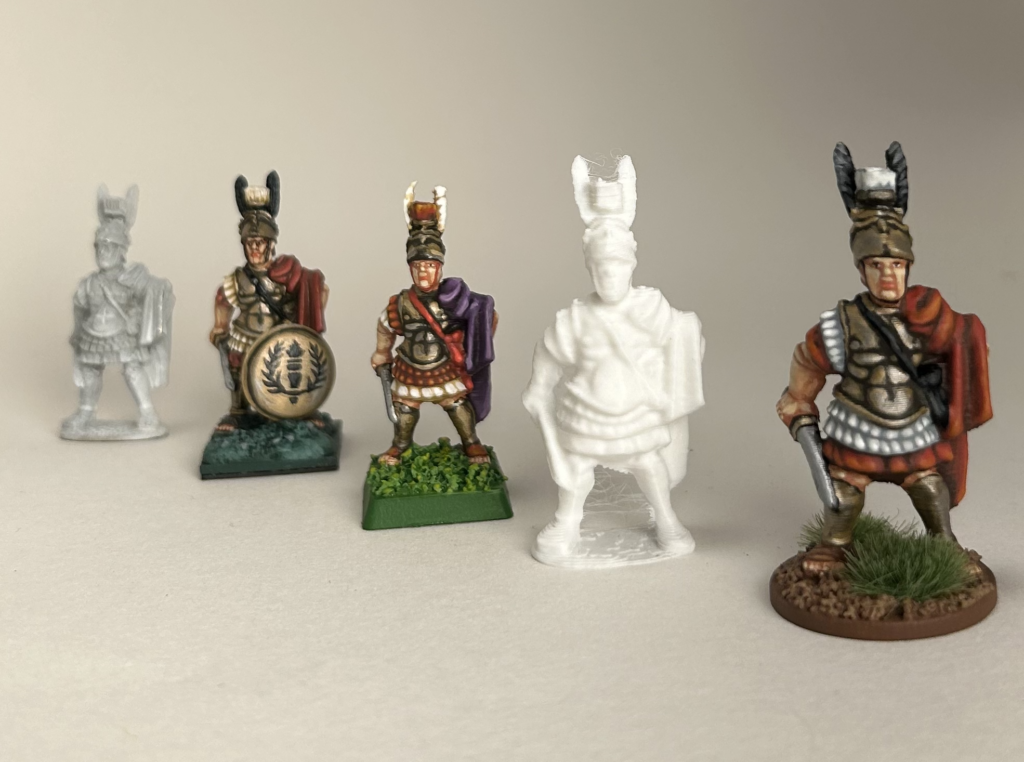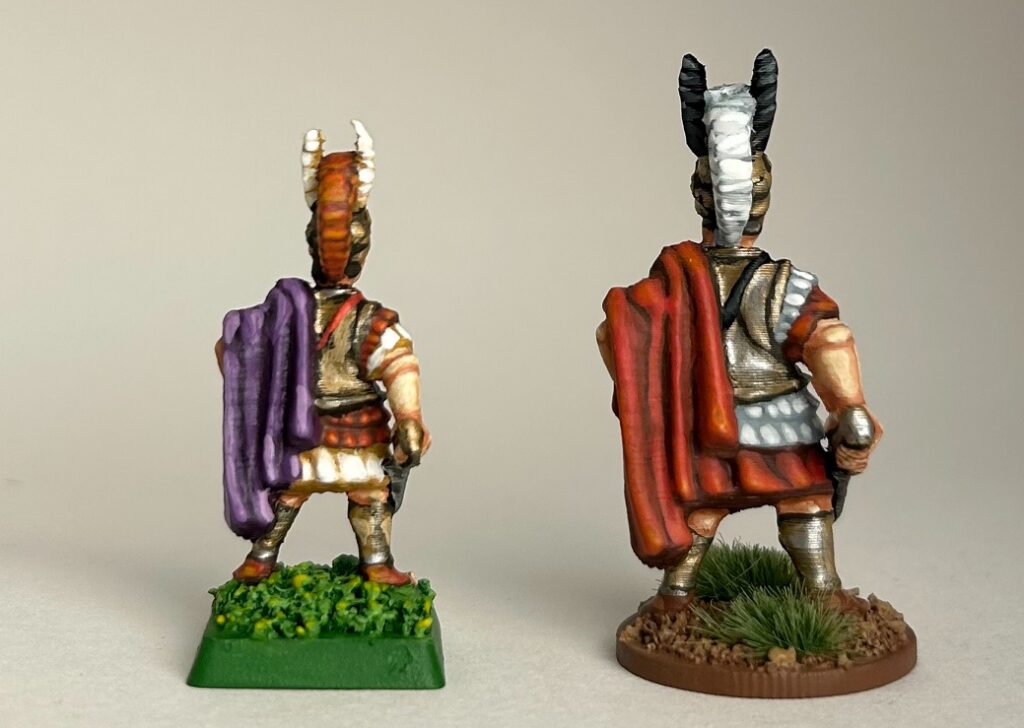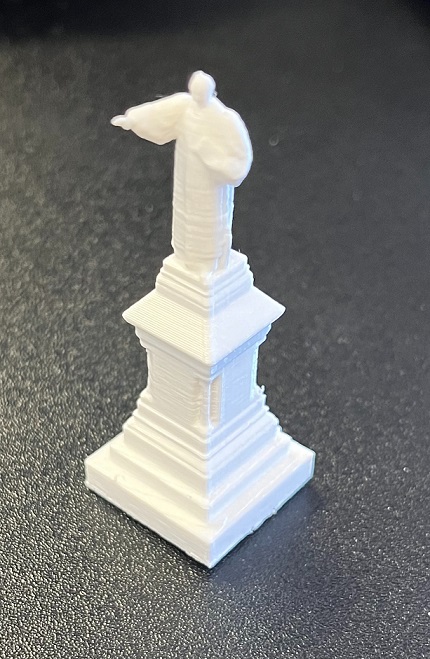Vote for the People’s Choice Award for the 3d Printing Competition
Thanks to everyone who joined this year’s competition! Our application period closed on April 22nd. Now, it’s time to vote for the People’s Choice Award, worth $50. Your vote will decide our next winner! Voting closes at midnight Thursday, May 9th. All winners will be announced Friday, May 10th.
Read through the following submissions then vote for your favorite.
These 3D models were entered into the Spring 2024 3D Printing and Design Competition. Participants were tasked with answering this prompt: ‘Share how you made your project, what inspired you, what you learned, and where it could take you. Essentially, tell us the story behind your project and reflect on the process.
“Aventine miniatures” by Alexander Casella



Alexander’s response: This study utilized photogrammetry to replicate a three-dimensional model. The model was configured through software and then printed through Trinity College’s 3D printing department. The model was then prepared and painted with acrylic paints. The model chosen for this study was a 28mm white metal figure designed and cast by Aventine miniatures. The miniature was outfitted as a late Etruscan/Republican Roman officer, muscled cuirass, greaves, and an Italo-Corinthian helmet. The figure was prepped for photography with a thin white coat of primmer and set against a black backdrop with light shining on it. Photographs were taken with a cell phone camera. The process of photogrammetry involves the overlapping of photographs to develop a model that has detail and dimension. Photographs of the model are taken from many angles and then processed through a software. This study employed Agisoft MetaShape Professional 2.1.1. The developed 3D model in the software was then sent to the Trinity College printers where it was printed. The figure’s scale was adjusted measuring now approximately 50mm from the base to the top of the plume. After printed, the model was cleaned of model lines and flash with a file, mounted on a 25mm round wood base, fine sand glued to the base, given a coat of acrylic primmer and painted with acrylic paints. The model was then given two grass tuffs and a coat of matt varnish.
“Multifunctional pen holder” by Quinn Danzis
Quinn’s response: I made this 3D print to be a multifunctional desk organizer with an appeal to artistic individuality. Its outer shelving separates this design from the average vertical pencil holder. I wanted a place to store objects that used to lay freely on my desk to avoid them from getting lost or broken. I use mine to hold my miniature Rubix cube and the other holds my air pod case or miniature sticky notes I use to mark up my textbooks. The top holds a variety of sizes for pencils and pens. It is also labeled “Miscellaneous” because that is what it holds—all different types of office supplies. Included in the top there are rectangular compartments for pushpins, staples, or any other small objects that one would want accessible on their desk. This organizer is very helpful in my day-to-day use of office supplies and allows me to keep my things in order while being pleasing to the eye.
“Trinity Decision Dice” by Erkhan Tuimaada
Erkhan Tuimaada’s response: As spring breathes new life into the Trinity campus, I watch groups of prospective students navigate our paths, their faces alight with curiosity yet weighed by the gravity of their choice ahead. Each is at a crucial crossroad, about to decide on their collegiate future. Inspired by this pivotal moment, I developed the “Trinity Decision Dice” — a playful yet profound tool designed to simplify and lighten this significant decision-making process. Utilizing 3D printing technology, each dice displays “Trinity College” on all sides. The journey of crafting these dice in Tinkercad challenged and enriched my digital design skills, deepening my appreciation for thoughtful creation. These dice are more than a novelty; they’re a beacon of fun in the daunting quest of selecting a college. Envisioned as both a charming artifact and a practical utility, the “Trinity Decision Dice” serve a dual purpose. They’re a testament to the creativity Trinity encourages and a handy tool for the admissions office. When a prospective student rolls the dice, they’re playfully reminded that while some life decisions are left to chance, choosing Trinity is a deliberate step toward an enriching future. Set to become a memorable gift from the admissions office, these dice offer prospective students a tangible reminder of Trinity’s commitment to making each student’s educational journey as fulfilling and supportive as possible.
“Rack Design” by Samuel Salas Sanabria
Samuel Salas’ response: My name is Samuel. This is my first time making a 3D model for 3D printing and I was inspired by the vial racks we have in the lab. They are very useful as they can accommodate different sizes of vials. I believe that 3D printing is a powerful tool that should be used more often to create lab equipment. Therefore, I decided to participate in this competition as a way to get me started on learning how to 3D print lab equipment. In the lab, sometimes accidental chemical spills of dangerous chemicals can happen. This design is the first attempt to create a rack that can be used to hold both vials of multiple sizes and cuvettes, something that cannot be found in the market. This way the cuvettes can be safely moved around, chemical exposure can be minimized, and thus, lab safety can be improved. This first design does not incorporate the holes for the cuvettes due to some concerns I had with the dimensions of the design and time limitations. Printing this first attempt will be useful to address those concerns with the dimensions and then incorporate the cuvette slots in a second attempt during the summer when I am not limited in time by classes.
“Bishop Brownell Statue” by Mehran-Lodge
Mehran-Lodge’s response: I created the model by flying a drone around the statue and taking around 150 photos. then using a few different photogrammetry software’s I created many mesh the final product coming form ReCap Photo. I then touched up the models removing strange details and separating the fingers and finalizing the design. I was inspired to do this because I always have been interested in getting into photogrammetry and this seemed like a good excuse to finally do it.
“Niveis da depressao” (Levels of Depression, in Portuguese) by Poliane Soares
Poliane’s response: This project is entitled “Níveis da depressão” (Levels of Depression, in Portuguese), and demonstrates the different thoughts I had when I was in a depressive state. The different colors of the project (lilás, vermelho e rosa bebê) represent my approaches to my thoughts, being lilás trying to be cynic about my emotions, vermelho being the angry stage and rosa bebê being me connecting with my inner-self to be able to pass through all of those different emotions. While creating the project I had problems with creating 3D complex objects, as I first wanted to sketch a person (myself) or a brain bleeding emptiness to represent my feelings while in depression. The biggest problem was that I was not skilled enough, not just in SketchUp, but also at drawing, to make those objects. Because of this, I went to my plan B, that was showing those painful moments in a more direct way – through words and colors.
I am definitely looking forward to work on my abilities to drawn or to put complex objects in SketchUp,
as I feel 3D printing is a powerful tool for us to be able to demonstrate our feelings. I have always used
poetry as a way of expressing myself, so I was hesitant at first to make a visual project, especially
because it is difficult to “translate” the images from your mind to the computer, but I actually quite
enjoyed the process! Thank you so much for this competition 🙂




